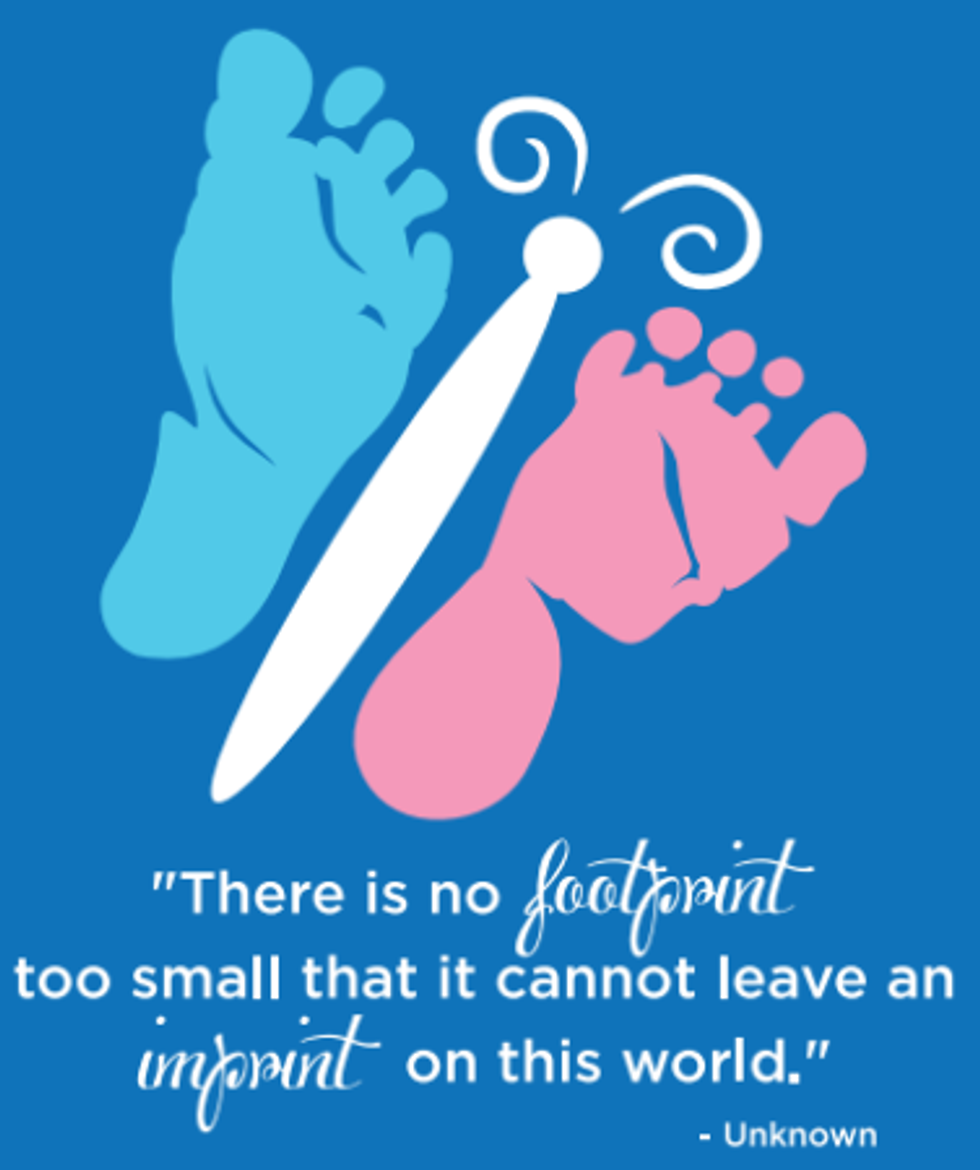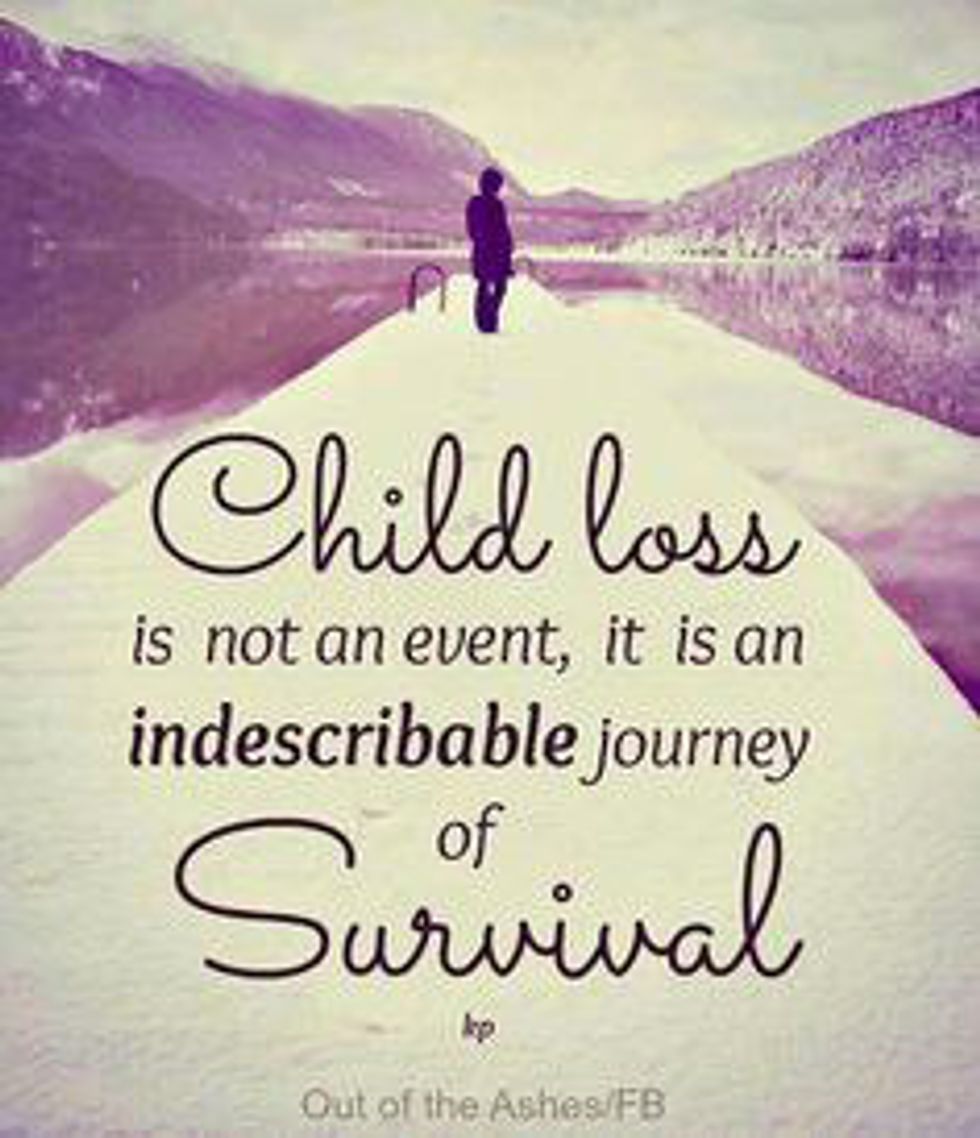It’s finally October and it is the month to raise awareness for so many different topics. From Breast Cancer Awareness to Miscarriages and Angel babies, the loss of a loved one never leaves us and they change our lives forever. While this month is notoriously known as ‘Pinktober,’ I would like to take some time to focus on the other side of awareness that is less heard of with regards to raising awareness amongst society. This month is special because it represents those special angels we have gained along the way. This article is thus dedicated to those that have miscarried, had the strength to give birth to a stillborn, or have an angel baby in heaven.
Miscarriages are often common amongst those going through the conception stage. In fact, as many as 75% conceptions will become a miscarriage and will never even begin into the pregnancy stage for women. Many reasons can occur for this, but the most common is due to a certain amount of fertilized eggs that do not proceed to a full term pregnancy. Other reasons include failed implantation, in which the fertilized egg does not “stick” and so it continues on its way. However, most women won’t know that they are pregnant at this stage and instead think it’s a menstrual cycle occurring.
Unfortunately, statistics show that one in three women will suffer from a miscarriage during their pregnancy after implantation. This is a shocking number, but none the less, it is far from untrue. A dear friend of mine, Anna, shares her story of suffering and coping with a miscarriage she experienced back in January of 2013. Her first pregnancy was a rather “unique” experience because she was not only pregnant, but she was pregnant with twins and didn’t know, yet. Her story began after having bled quite heavily for a month or so. Since she suffers with PCOS (Polycystic Ovarian Syndrome), this type of bleeding is not uncommon for us; as I too suffer with PCOS. That was until she began to experience “sharp and excruciating pain.”
As she describes her experience further she expressed the pain she suffered emotionally and physically. While at work one day, the pain had become so bad she ran to the bathroom and found that there was what appeared to be a “smashed grape” in her underwear. This, my fellow readers, was a fetus that she had miscarried that day. The next morning when Anna went to the gynecologist, they had confirmed she was pregnant, but had indeed miscarried. For a week she went to the gynecologist daily and her labs proved that she was still pregnant. None of her symptoms had changed and they finally did an ultrasound that would prove she was pregnant with a second fetus.
Unfortunately, this pregnancy would result in a second miscarriage because it was blocking her fallopian tube. While she was given the option of a surgical procedure that would be harder on her body, she was also given the opportunity to do a chemotherapy treatment that would allow everything to “naturally” pass through. This was her option as it was much less taxing on her body. On February 4, 2013, her birthday, she went to the Cancer Institute and terminated what was left of her pregnancy.
Fast forward two years and she is a very happy mother of an almost one year old precious baby boy and eight months pregnant with a second little boy that will make his debut this month! When I asked her how she coped with the loss of her twins, she expressed that she coped and once she was pregnant with her first, felt as though she had angels watching over her and preparing her for motherhood. While this story is painful and emotional to read, I couldn’t be happier for her and how her future has begun to unfold before her eyes. However, we cannot forget those that have lost to stillborn infants, either.
Stillborn infants occur in three different stages and are often understood to be when a fetus dies in the womb. The first stage is called an “early stillbirth” which occurs between 20 and 27 fully completed weeks of pregnancy. The second stage is called a “late stillbirth” and occurs between 28 and 36 completed weeks of pregnancy. Finally, the third stage is called “term stillbirth” and occurs between 37 or more fully completed weeks of pregnancy. Thankfully, stillbirth only effects about 1% of pregnancies, but that is still 1% too many. This means that roughly 24,000 babies are born stillborn in the United States alone. Unfortunately, the causes are still quite unknown, but thankfully, a young woman shares her story with us about giving birth to a stillborn baby.
My dear friend Anna contacted me and told me that a friend of hers wanted to share her story about giving birth to a stillborn baby. This strong young woman, Angel, shares her story about love and loss in a powerful and emotional story. Angel experienced giving birth to a stillborn in March of 2013. Throughout the nine months of pregnancy, she created memories with her son that she named Noah. Angel shares that she felt him move within her, but when he was born, things would drastically change, as she came home to an empty crib. There are no words to fully express or explain the pain that a mother carries when she gives birth to a stillborn. It changes your life forever, as expected, of course. Angel continues to share her story further by explaining Noah’s birth day in explicit detail. As I read her story, I could feel my heart breaking for her. Angel gave her heart and soul into her first birthing process, and did such a phenomenal job too. However, it was also life changing because when Noah made his debut to the world, he was silent and purple. Angel explains that she was able to figure out what was going on, as the birthing room went silent. Her husband begged the doctor to save Noah, but he had already passed on. While Angel gave birth 18 months ago to a beautiful baby girl, the loss of Noah still stands within her heart, as she says, “I felt like a piece of me died with him.”
There are no words to describe the stories that I have shared with my readers. Hearing these women share their experiences breaks my heart for them in more ways than one can fathomably imagine. From miscarriages to stillborn births, the pain is equally life changing. However, I would also like to take a moment to remember the angel babies that women and their loved ones have lost along the way. Neonatal death occurs when a baby passes away within a month of coming into the world. The top three causes are low birth weight, birth defects, and premature birth. However, there are other less common causes that women should take into consideration. Preeclampsia, problems with placenta, sepsis and other infections, or even Asphyxia can cause neonatal deaths. This type of death occurs in approximately within four of every 1,000 babies that are born. Furthermore, non-Hispanic African American women are more likely to have a baby die than any other race or ethnicity. Although this is not considered a common form of loss associated with birth, it can happen and it should be made aware.
Another young woman, that prefers to stay anonymous, shares her story of infant loss. Two months after giving birth to identical twins, one twin, Baby B, had passed away. He was quite sick and although nobody was able to identify the cause of his passing, it was decided that it was likely to be sudden infant death syndrome (SIDS). Her cousin struggled, as any woman would, with the loss of her son, as she saw him in the twin that Baby B had left behind. However, with love, encouragement, and support, she was able to regain her strength. Although she still battles the pain of losing Baby B on the anniversary of his passing and during the month of October, which is awareness month, she is a happy mother of two beautiful children now. Baby B is watching over them, protecting, and guiding them still to this very day.
It is important to understand that SIDS is another leading cause of losing a baby after birth. SIDS is an unexplained death that occurs with a child less than one year of age. While it is still not understood and fully defined with a cause for death, it is thought to be a defect in the brain that controls sleep and arousal from such. Physical causes that can contribute to SIDS are brain abnormalities, low birth weight, and upper respiratory infections. While there are other potential causes, these are in fact, the leading reasons. However, there are also environmental reasons to take into consideration too. Sleeping on the stomach or side, sleeping with parents, or sleeping on a soft surface are all potential environmental causes of SIDS and should be cautiously taken into consideration. Risk factors that heighten this possibility are the following: boys are more likely to pass away from SIDS, babies in their second and third month of life, African American, American Indian, or Alaska Natives are more likely to pass, a familial history of SIDS, secondhand smoke exposure, and being born prematurely. Maternal risk factors include, but are not limited to, being under the age of 20, smoking, utilizing drugs and/or alcohol during pregnancy, or lack of proper prenatal care. Thus, it is so important to not only follow doctor’s orders, but also take into consideration the life you are carrying.
It is so important to raise awareness with thought and consideration to those that have suffered such dramatic and painful losses of their angel babies. I find myself trying to keep it together as I write this article because even though I have not experienced being pregnant or losing a child, I have learned from these strong women how life changing this truly is. Women across the globe lose their babies every day and it’s so important that we take the potential causes into consideration so that we can lessen the rate of loss and eventually, with high hopes, diminish the rate all together. With that being said, I would like to take a moment to pray for the women that have experienced loss or are experiencing loss now. May you find the strength you need to cope and heal. Ladies, we need to stand united and be a support system for one another, as we never know who may be plagued with such a painful experience next. I hope that through our unity, we can be a source of comfort and encouragement, essentially a support system for one another.
Finally, since it is October, many ladies and their families will represent their angel babies with white pumpkins, while colored pumpkins represent the current lives present. This is a beautiful way to not only share their story, but also share the lives of those that have been called “home.” As a result, I would like my readers to take a moment of silence and pray for the angel babies that have been called “home.” May they rest peacefully in the arms of God and may their mothers find solace in knowing that someday, they will be reunited, but until the time is “right,” may they find the strength to stay strong in their everyday lives for their angel babies.





























